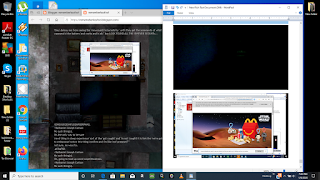Acme Client For Macos
Instant Client 19.8 supports macOS High Sierra, Mojave, Catalina, and Big Sur. In Finder, double click on all desired Instant Client.dmg packages to mount them. All installations require the Basic or Basic Light package. Open a terminal window and change directory to one of the packages, for example. This flag tells Posh-ACME to always generate a new private key on renewals. The old parameters for key replacement have been removed. (#181). Added `UseSerialValidation` switch to `New-PACertificate`, `New-PAOrder`, and `Set-PAOrder`. This flag tells Posh-ACME to process the order's authorization challenges serially rather than in parallel.

There are several options for installing Git on macOS. Note that any non-source distributions are provided by third parties, and may not be up to date with the latest source release.
Homebrew
Install homebrew if you don't already have it, then:$ brew install git
Xcode
Apple ships a binary package of Git with Xcode.
Binary installer
Tim Harper provides an installer for Git. The latest version is 2.32.0, which was released 22 days ago, on 2021-07-21.
Building from Source

Os-acme-client (Let's Encrypt) - HTTP-01 Validation Not ...
If you prefer to build from source, you can find tarballs on kernel.org. The latest version is 2.32.0.
Installing git-gui
If you would like to install git-gui and gitk, git's commit GUI and interactive history browser, you can do so using homebrew$ brew install git-gui
An ACME (RFC 8555) client implemented as a PowerShell module that enables you to generate publicly trusted SSL/TLS certificates from an ACME capable certificate authority such as Let's Encrypt.
- Multi-domain (SAN) and wildcard (*.example.com) certificates supported.
- RFC 8738 support for generating certificates for IP addresses (if your ACME CA supports it).
- Single command for new certs,
New-PACertificate - Easy renewals via
Submit-Renewal - RSA and ECC private keys supported for accounts and certificates
- Built-in validation plugins for DNS and HTTP based challenges. (pull requests welcome)
- Support for using existing certificate request (CSR)
- PEM and PFX output files
- No elevated Windows privileges required (unless using -Install switch)
- Cross platform PowerShell support. (FAQ)
- Account key rollover support
- OCSP Must-Staple support
- DNS challenge CNAME support
- Multiple accounts supported per certificate authority which allows different certs to have different contact emails
- Help system for DNS plugins using
Get-PAPlugin - External Account Binding support for CAs that require it
- Preferred Chain support to use alternative CA trust chains
Release
The latest release version can found in the PowerShell Gallery or the GitHub releases page. Installing from the gallery is easiest using Install-Module from the PowerShellGet module. See Installing PowerShellGet if you don't already have it installed.
Acme Client Windows
NOTE: If you use PowerShell 5.1 or earlier, Install-Module may throw an error depending on your Windows and .NET version due to a change PowerShell Gallery made to their TLS settings. For more info and a workaround, see the official blog post.
Development
To install the latest development version from the git main branch, use the following PowerShell command. This method assumes a default PSModulePath environment variable.
On Windows, you may need to set a less restrictive PowerShell execution policy before you can import the module.
Acme Client For Macos Catalina

The minimum parameters you need for a cert are the domain name and the -AcceptTOS flag.
This uses the default Manual DNS plugin which requires you to manually edit your DNS server to create the TXT records required for challenge validation. Here's a more complete example with a typical wildcard cert utilizing a hypothetical Flurbog DNS plugin that also adds a contact email address to the account for expiration notifications.
To learn how to use the supported DNS plugins, check out Get-PAPlugin <PluginName> -Guide. There's also a tutorial for a more in-depth guide to using the module.
Author Topic: Trouble With Letsencrypt
The output of New-PACertificate is an object that contains various properties about the certificate you generated. Only a subset of the properties are displayed by default. To see the full list including the filesystem paths to any certificate files that were generated, pipe the original output to Format-List or use Get-PACertificate | Format-List. The root config folder for all data saved by the module is either %LOCALAPPDATA%Posh-ACME on Windows, ~/.config/Posh-ACME on Linux, or ~/Library/Preferences/Posh-ACME on Mac OS.
- Supports Windows PowerShell 5.1 (Desktop edition) with .NET Framework 4.7.1 or later
- Supports PowerShell Core 6.2 or later (Core edition) on all supported OS platforms. NOTE: 6.0-6.1 will also work, but there are known issues when using SecureString or PSCredential plugin args on non-Windows platforms.
- Requires
FullLanguagelanguage mode
See CHANGELOG.md